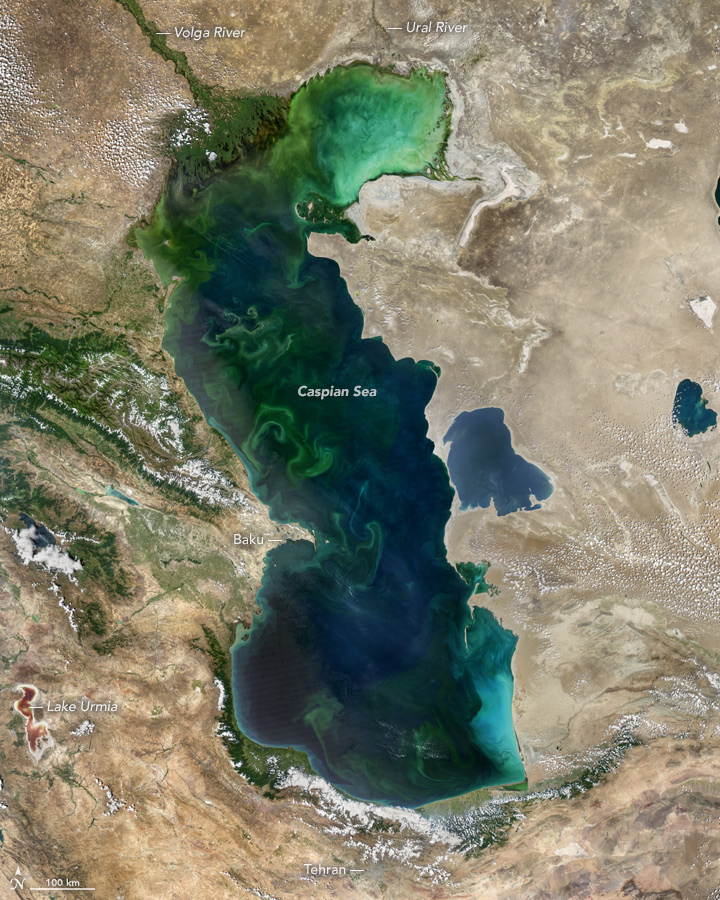Published on 10 August 2017
Given adequate sunlight and nutrients, phytoplankton populations can swell into blooms large enough to be visible from space. On August 3, 2017, the Moderate Resolution Imaging Spectroradiometer (MODIS) on NASA’s Aqua satellite acquired this image of several blooms in the Caspian Sea:
Source: NASA Earth Observatory
Phytoplankton blooms are often harmless, and are an important food source for marine life. Other times, blooms can be harmful; they can deplete the water’s oxygen and suffocate marine life, and produce toxins that can be harmful to both aquatic creatures and humans.
Lake Urmia is visible west of the Caspian Sea. Microscopic organisms periodically turn the lake’s salty water striking shades of red and orange.
